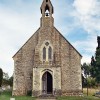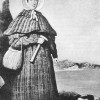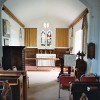Formerly known as Wootton Glanville, the name of this small village community in north-central Dorset preferentially became Glanvilles Wootton in conjunction with boundary changes that took place in 1985. A former parochial division of Cerne, the parish now comes under the North Dorset Local Authority, and commonly shares boundaries with the parishes of Buckland Newton, Pulham, Holwell, Holnest and Minterne.
Wootton is situated on the B3146, approximately 12 miles north of Dorchester and 7 miles south east of Sherborne in the Cerne valley area, where the rich clay pastureland of the Blackmore Vale grades south-eastwards into the chalk downland of the Dorset Heights.
The earliest visible relic of human occupation of any magnitude within the parish is Dungeon Hill, an Iron Age fort and later Roman camp lying south east of the village.A Bronze Age Celt (axe or palstave) has been unearthed on Newland Common and also a very long iron spur as well as some Spanish and monastic coins, though prehistoric burials may be present.
Before the Norman Conquest Wootton was a possession of the Abbot of Middletun,then having 16 acres of meadow and four of pasture, but at Domesday it was held by William de Braiose. The earliest Lords of the Manor were the Mauger family.
Before the time of Henry 111, Henry de Glanvyll held two virgates of land as a free tenant of the Abbot. The name of Wootton appears to derive from the“Wideton(e)” of Domeday, meaning a woody place, whilst “Glanville” is the modern form of de Glanvyll or Glanvill, the name of the manorial family who held the parish in the 14th century.
The nave and chancel of the Parish Church of St Mary the Virgin were re-ordered in 1876 by G.R.Crickmay with assistance from Thomas Hardy. During this restoration it was found that subsidence of the north wall of the nave was due to it having been built over a line of ancient coffins.
Today the parish has an area of 1,705 acres (690 hectares), but in 1865 its area was 1,665 acres (674 ha). It is sub-divided into the two tythings of Wootton and Newland; a number of hamlets or farmsteads lie within its borders as possible former manors of the mother church. These include Newlands, Osehill Green and – most famously – Round Chimneys, the farmhouse of which became the later home of the first Winston Churchill and the birthplace of his son, John, first Duke of Marlborough.
The area’s soil is noted for being very favourable for growing timber, and many of the hedges have been thickly planted with oak and elm. Near Wootton Manor house there is also a fine grove of tall mature elms. By the time of the historian John Hutchins in the 18th century the village had a dispersed settlement pattern with cottages and houses occupied mainly by farmers and labourers. Only a few cottages remained as leasehold. The main agricultural activity of the parish has traditionally been sheep and dairying on rich pastureland divided into several dairy farms. In the 19th century the villagers were sending butter produced from milk to market in London via Sherborne.
Other notable early buildings are the Elizabethan manor houses of Wootton and Round Chimneys. The latter underwent a period of dereliction, but has more recently been restored in a more truncated form. Most homes in the village today are either recent or 19th century; there is a farm with a barn and a cottage with a half-hatch door called “The Smithy”, both dating from 1874.
Wootton formerly possessed two public houses: The New Inn and The Pure Drop Inn, but both of these ceased trading and have since been converted into private residences. The Post Office also has been closed and is now a private cottage. There is however a small public hall still in use near the centre of the village.
As originally planned, the laying of the Yeovil – Dorchester branch railway line was to have passed through the village, but a local landowner forcefully persuaded the planners to lay the line five miles to the west. He did however,plant several Douglas Firs in his wood.
Glanvilles Wootton and in particular the Churchill’s manor house, Round Chimneys, is of significance as it later became the home of James Charles Dale and his son Charles William Dale, noted entomologists who recorded the history and insect life of the parish. In addition James Charles Dale was the first to describe the Lulworth Skipper butterly from a specimen captured at Durdle Door in 1832.
The village is also thehome of former Country Life magazine columnist David Edelsten, author of Dorset Diaries, and landscape architect Amanda Patton, who beat 3,500 other competitors to first prize in a National Horticultural Society garden photography competition.
Changes were made to this article on 12th April 2013 Ed.



